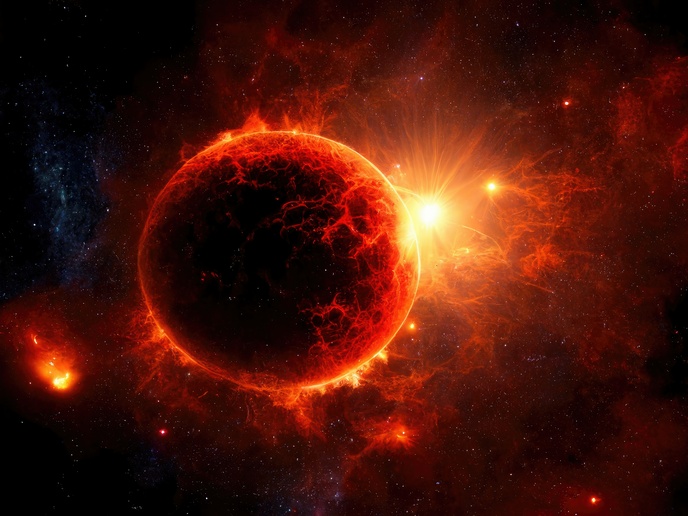Unravelling the mysteries of dying stars and their hidden companions in the cosmos
Research conducted by an international team of scientists has led to a remarkable discovery concerning a dying red giant star in the W Aquilae system. Supported by the EU-funded ICEDRAGON, UniverScale, AEROSOL, EXWINGS and ParisRegionFP projects, their work reveals the cool red giant star’s highly elliptical orbit around a companion star that takes around 1 000 years to complete.
Finding the unexpected
While exploring the final stages of the star’s life using the powerful ALMA telescope array in Chile, the team noticed unusual molecular emissions, specifically silicon nitride, on one side of the dying star. This unexpected observation pointed to the existence of a binary star system. “Once we noticed the peculiar silicon nitride emission on one side, we knew something extraordinary was unfolding,” reports study lead author Dr Taïssa Danilovich from the Monash University School of Physics and Astronomy, Australia, in a news item posted on ‘Phys.org’. The emissions showed the scientists that the dying star is not alone, and shares the stage with a longer-lived Sun-like star, making a highly elliptical orbit around it. Their findings revealed that the dying star takes not a few centuries, as initially speculated, but almost a millennium to complete a single cycle around its companion star. The team used hydrodynamical simulations to decode the impact of the companion star on the dying star’s stellar wind, namely the fast-flowing streams of particles ejected from the star. They found that the companion star had a major impact on the red giant star’s stellar wind, leading to the creation of visible concentric rings. This was confirmed by ALMA data and further supported by observations from the SPHERE instrument on the European Southern Observatory’s Very Large Telescope and the Hubble Space Telescope. The research not only provides valuable insight into the dynamics of the W Aquilae system but also introduces a new technique using ALMA for detecting the chemical signatures of past stellar encounters. Aided by this new method, astrophysicists could potentially unveil the hidden companions of other dying stars in the cosmos. The news item states: “In a galaxy where nearly half of stars like our sun exist in pairs or triples, this research marks a crucial milestone in understanding how stellar companions shape the destinies of their celestial neighbors.” The study supported in part by ICEDRAGON (Modelling of dust formation and chemistry in AGB outflows and disks), UniverScale (Sub-percent calibration of the extragalactic distance scale in the era of big surveys), AEROSOL (Astrochemistry of old stars: direct probing of unique chemical laboratories), EXWINGS (Explaining the winds of cool giant and supergiant stars with global 3D models) and ParisRegionFP (Paris Region Fellowship Programme) was published in the journal ‘Nature Astronomy’. For more information, please see: ICEDRAGON project UniverScale project AEROSOL project web page EXWINGS project website ParisRegionFP project
Keywords
ICEDRAGON, UniverScale, AEROSOL, EXWINGS, ParisRegionFP, star, cool red giant star, dying star, W Aquilae, stellar wind, orbit, telescope

